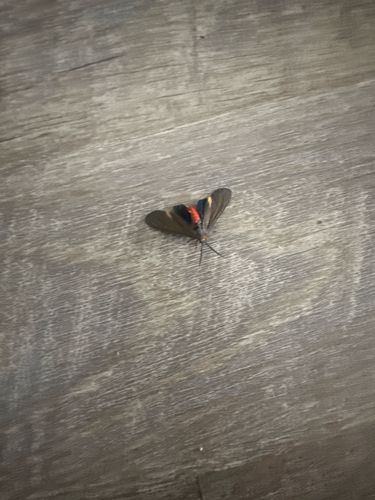Grapeleaf Skeletonizer Moth
Scientific Name: Harrisina americana
Order & Family: Lepidoptera (moths and butterflies), Zygaenidae (leaf skeletonizer moths)
Size: Wingspan typically ranges from 2.5 to 3.5 cm (1 to 1.4 inches).

Natural Habitat
Vineyards, gardens, and areas with available host plants, particularly grapevines (Vitis spp.) and Virginia creeper (Parthenocissus quinquefolia).
Diet & Feeding
Adult moths feed on nectar from various flowers. Larvae (caterpillars) are specialists and feed primarily on the leaves of grapevines and Virginia creeper, skeletonizing them by consuming the tissues between the veins.
Behavior Patterns
Adult moths are diurnal, meaning they are active during the day. They have a slow, fluttering flight pattern. Larvae are communal feeders and move in rows across leaves. They have several instars and undergo pupation in cocoons typically found in litter or soil. Multiple generations can occur per year.
Risks & Benefits
Risks: Larval feeding can cause significant defoliation of grapevines, leading to reduced fruit production and weakened plants, especially in agricultural settings. Benefits: As with many insects, they serve as a food source for birds and other predators. Adult moths contribute to pollination, though not considered major pollinators.
Identified on: 10/30/2025